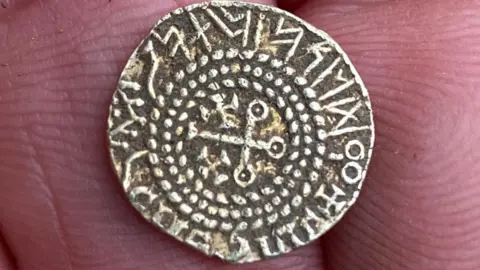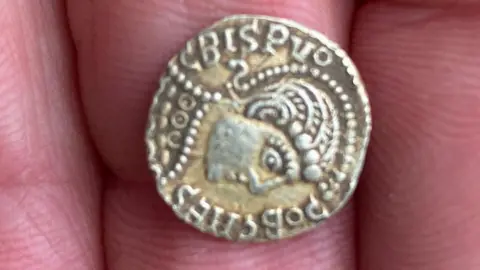Haslingfield Anglo-Saxon coin discovered in field to be sold
 Dix Noonan Webb
Dix Noonan WebbAn Anglo-Saxon gold coin discovered in a field by a metal detectorist is expected to be sold for up to £10,000.
Mark Pallett, 55, from Brentwood, Essex, found the item, that dates from 650-670 AD, in Haslingfield, Cambridgeshire, on 3 January.
The father-of-three said at first he thought it was a button and then did not think it was real.
When he turned it over and saw a male bust with a helmet he started to shake.
"It's almost like a voice in your head that tells you where to search," he said.
 Dix Noonan Webb
Dix Noonan WebbThe item, which is 13 mm (0.5 in) in diameter and weighs 1.3 grams (0.05 ounces) will be sold in March by London-based auctioneers Dix Noonan Webb.
Nigel Mills, consultant in artefact and antiquities at the auction house, said the design was based on an obsolete Roman coin of the emperor Crispus from the 4th century AD.
 Dix Noonan Webb
Dix Noonan Webb"The legend includes Runic text which translated into Latin is Delaiona (of Laiona) which may refer to the moneyer who struck the coin.
"Early Anglo-Saxon Runes or Futhark (named after the first six letters) originate from Germanic peoples and were sometimes included alongside Latin text on coins in Britain during the 7th century.
"The gold shilling is in extremely fine condition and centrally struck so you can read all the inscriptions.
Only eight examples of this 'Crispus' type have been recorded on the Early Medieval Coins database at the Fitzwilliam Museum in Cambridge, he added.

Find BBC News: East of England on Facebook, Instagram and Twitter. If you have a story suggestion email [email protected]
